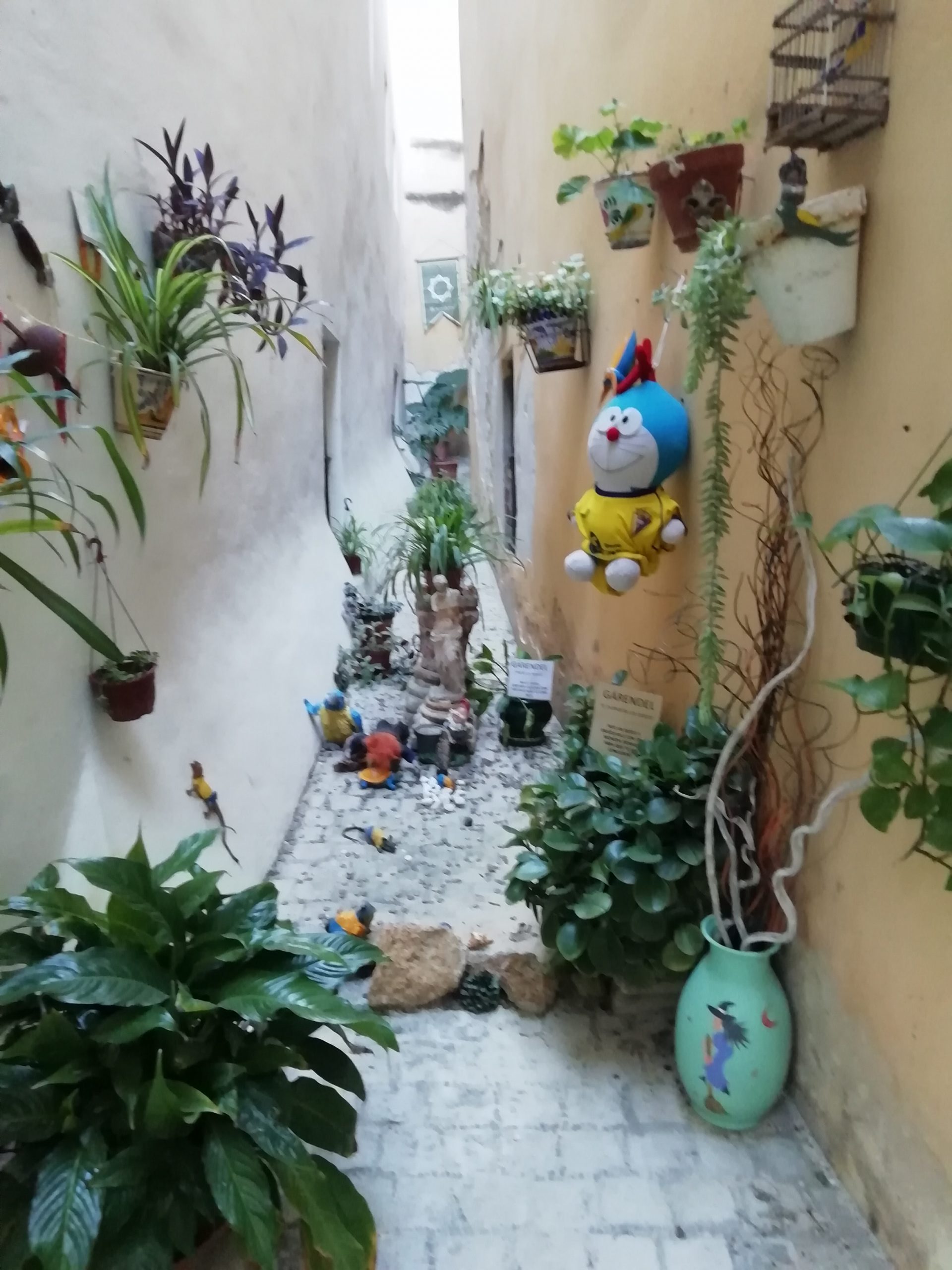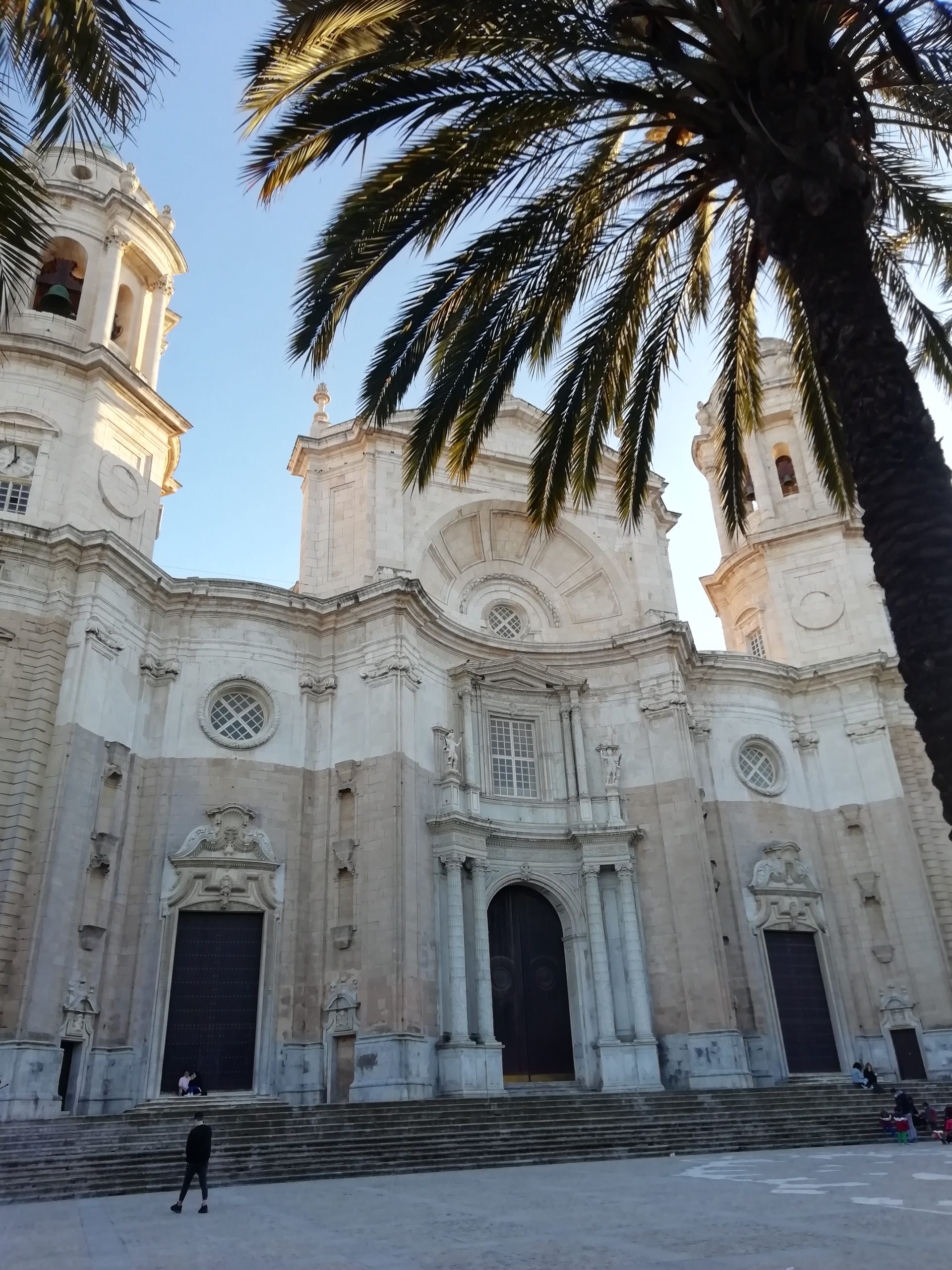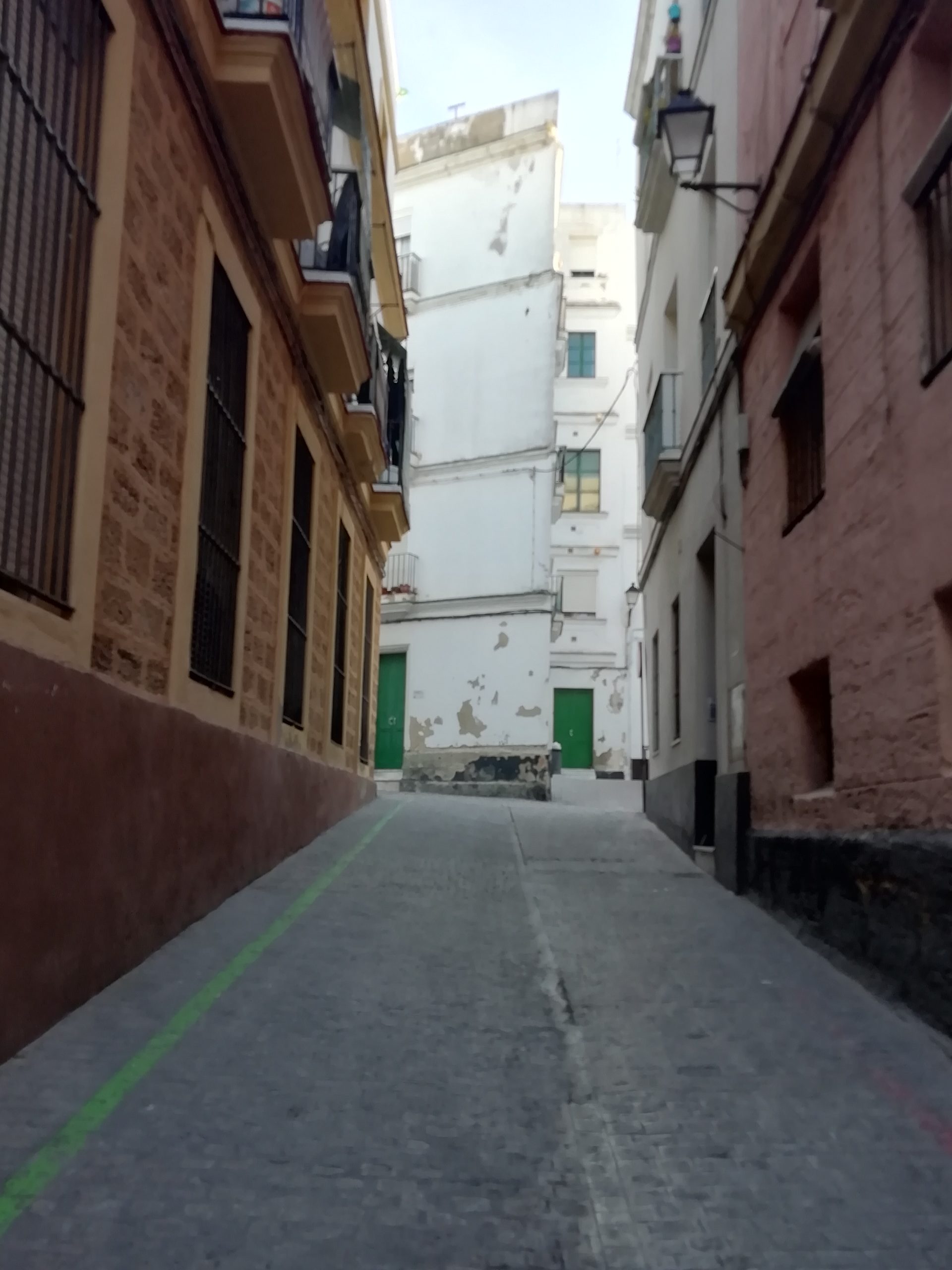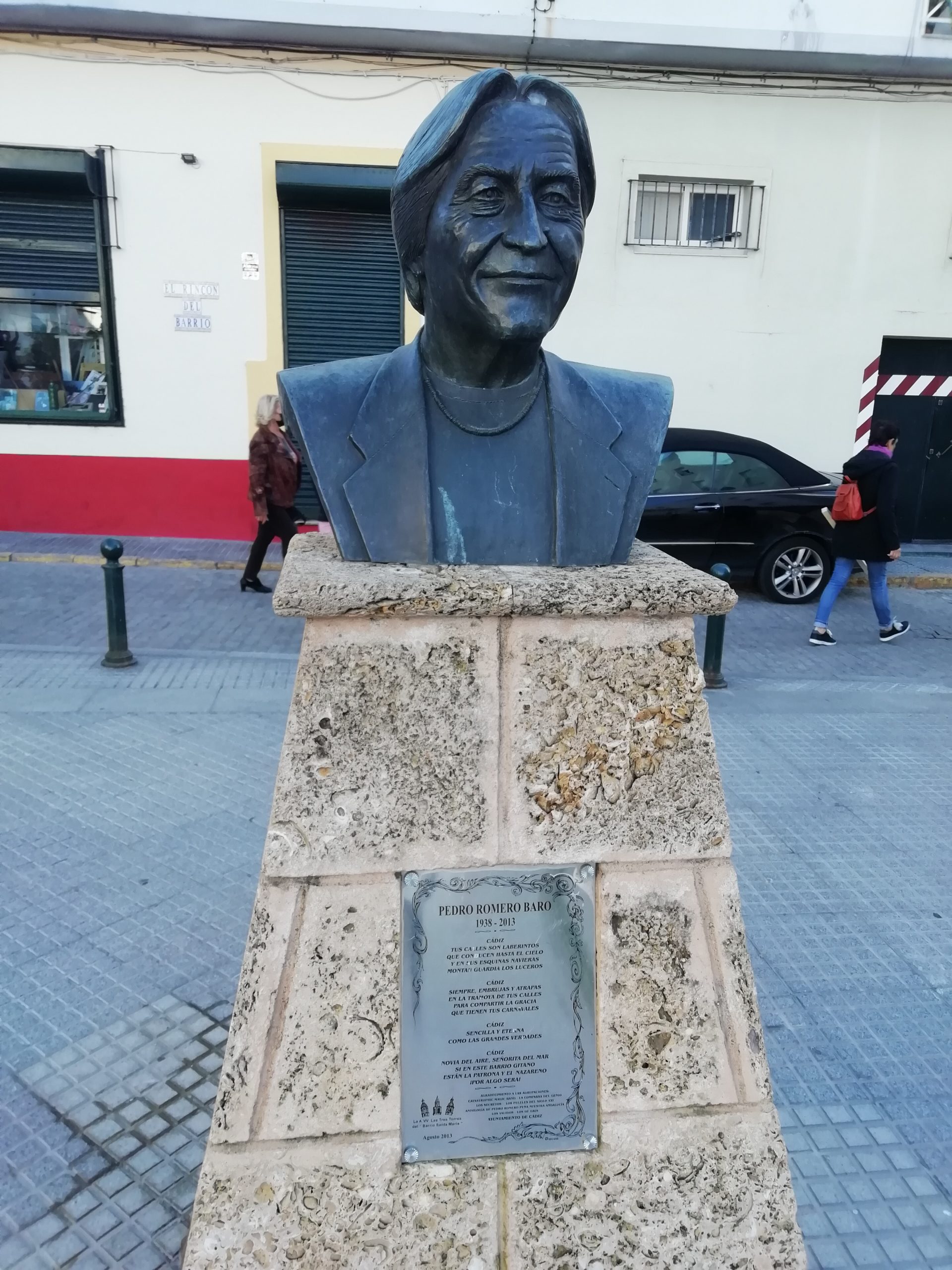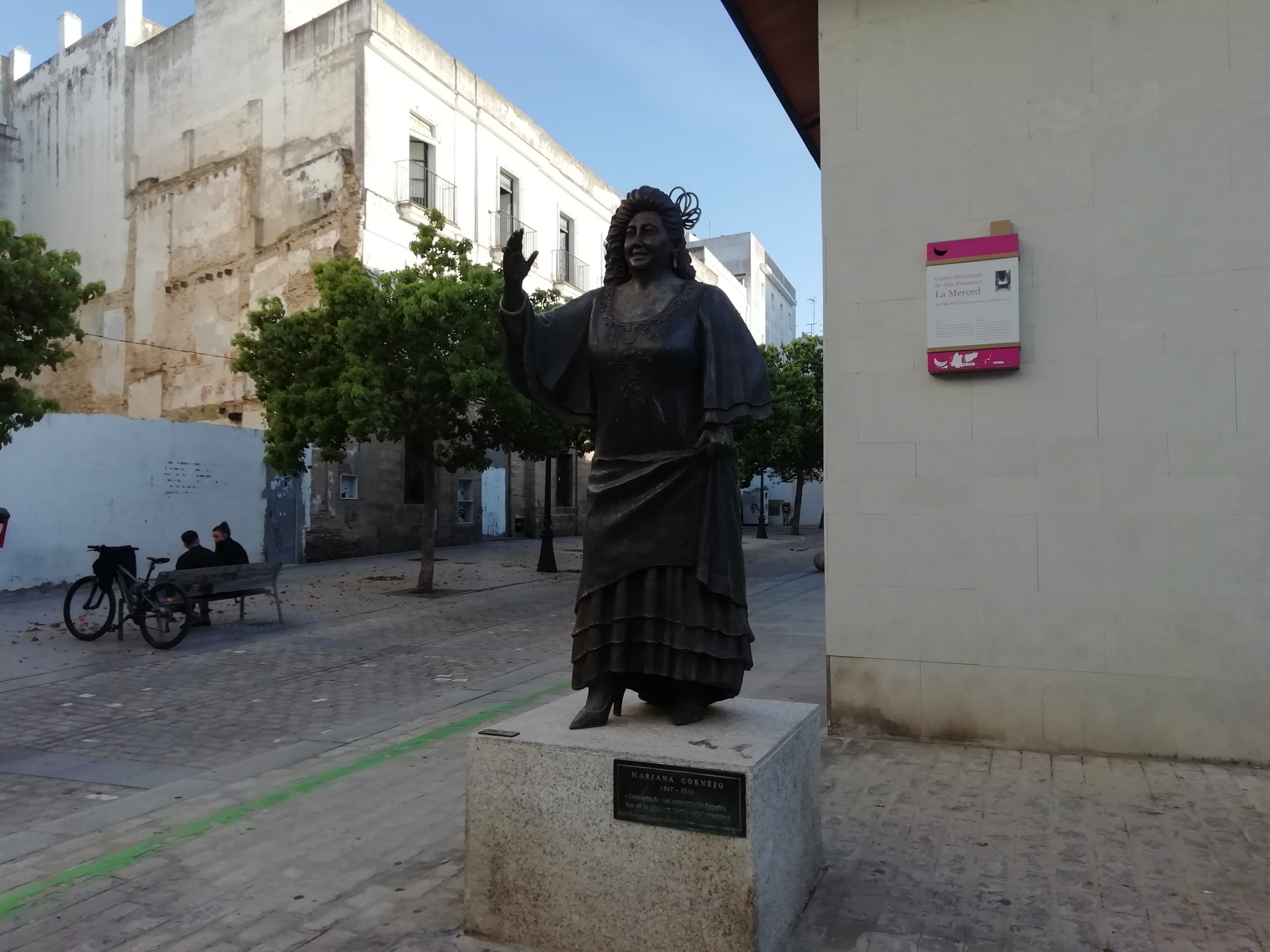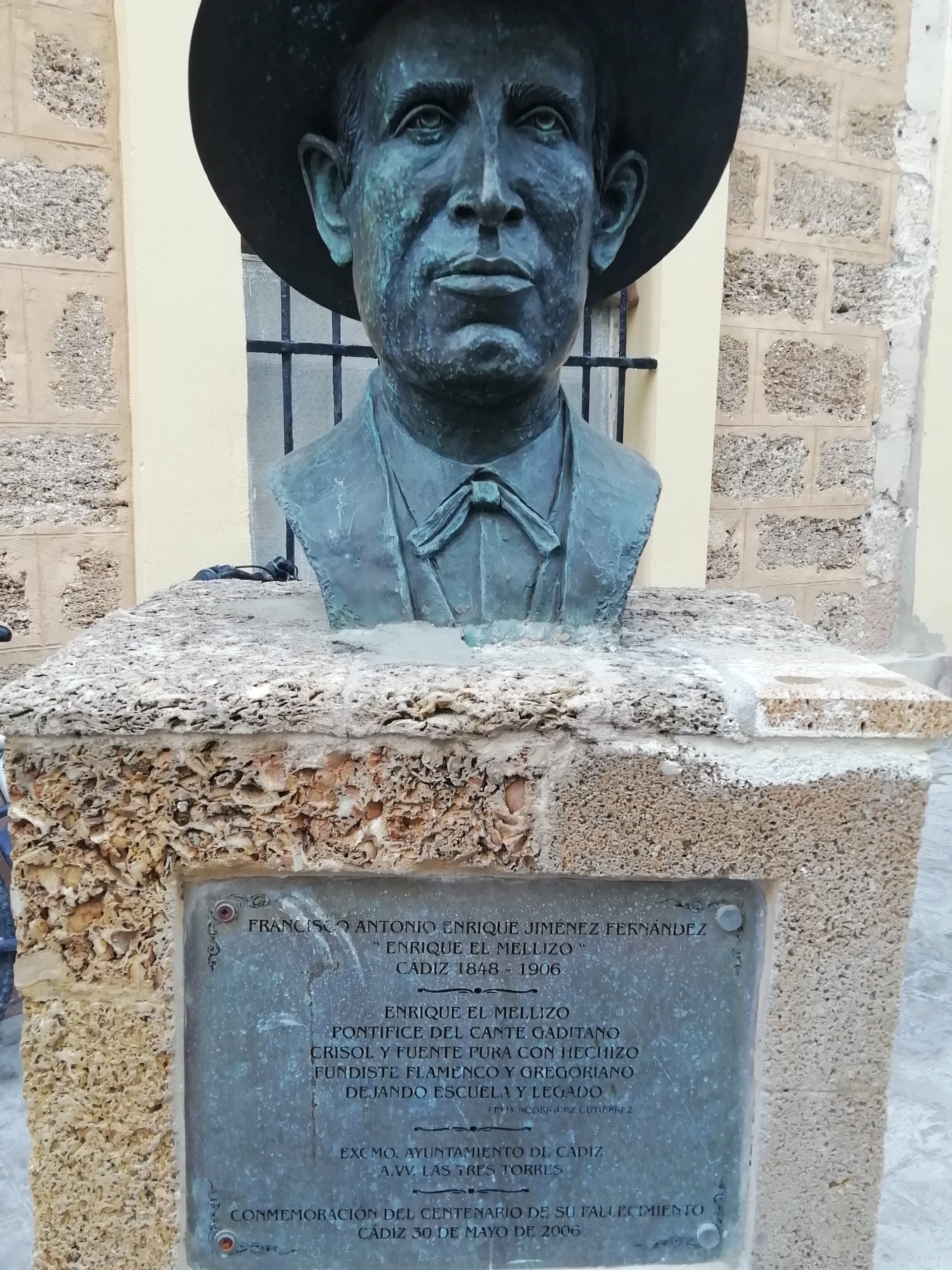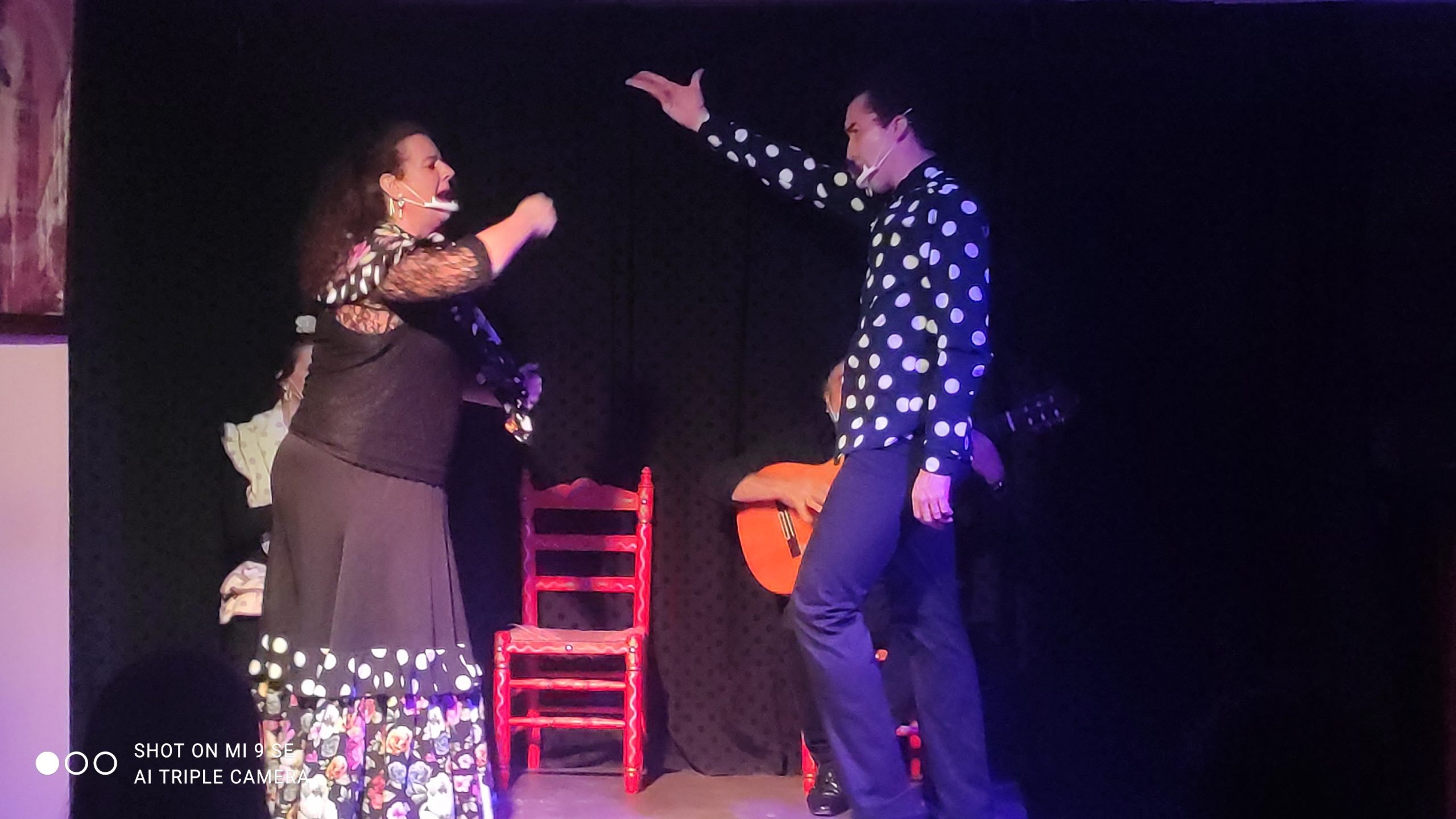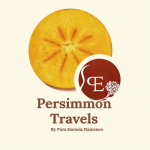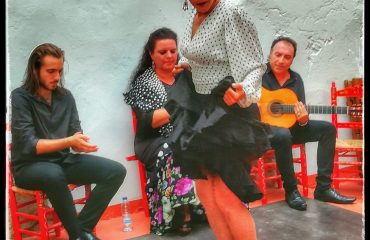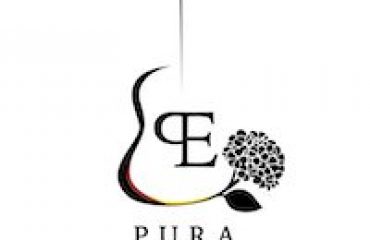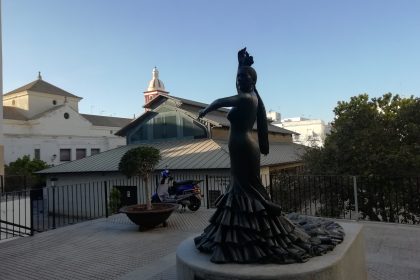
In our Tablao de Pura Esencia Flamenco in Seville, in the neighborhood of Triana, the best moment of our show is when our artists start for Alegrías.
It is common to listen to our singer Juan Toro, from sevillian Betis Street, the stanza of “Cadiz es una población (Cadiz is a city)(.,.)”, alluding to the millennial city, located on the Costa de la Luz and one of the enclaves to know what flamenco is
CÁDIZ, CITY OF LIGHT
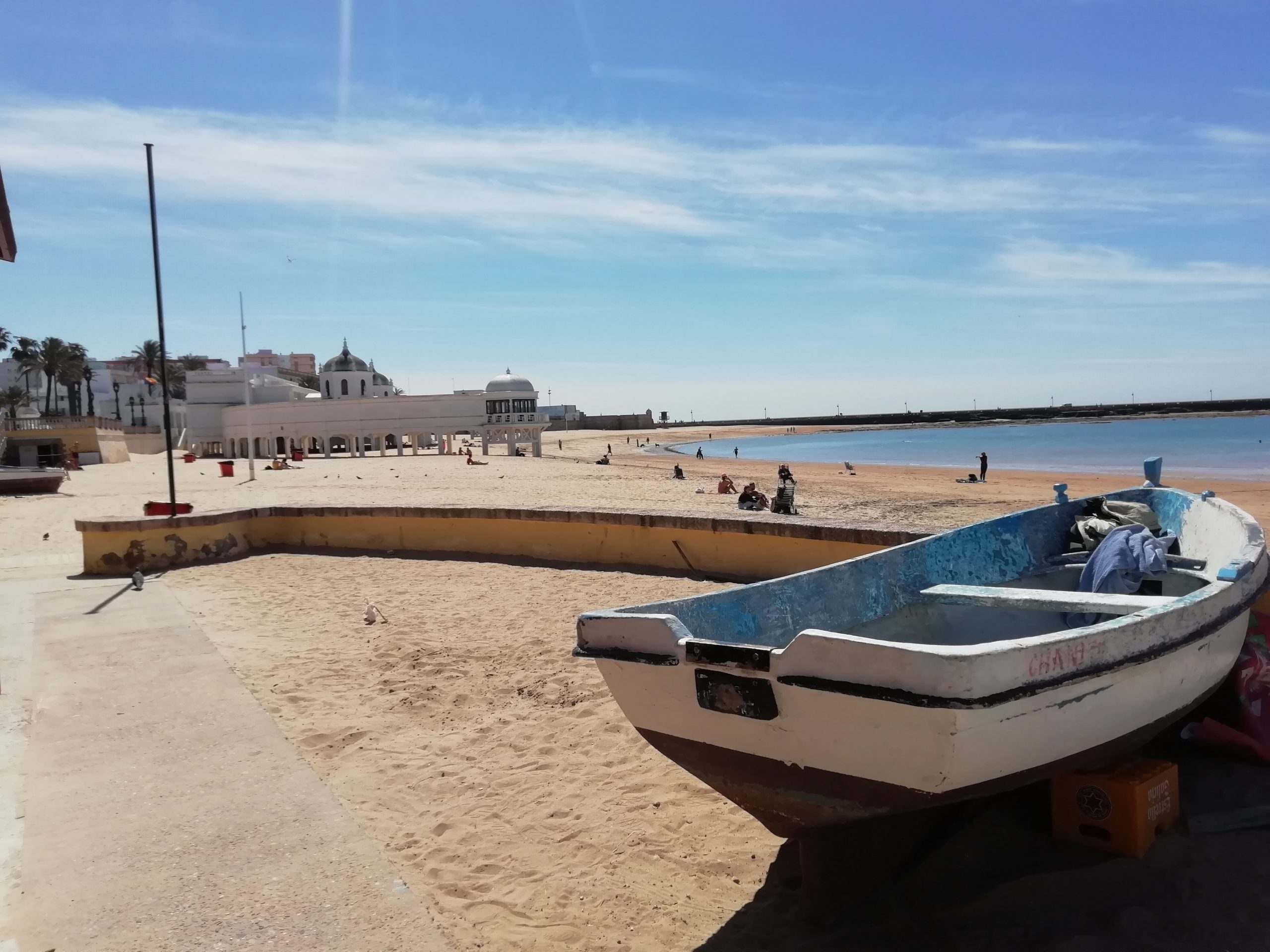
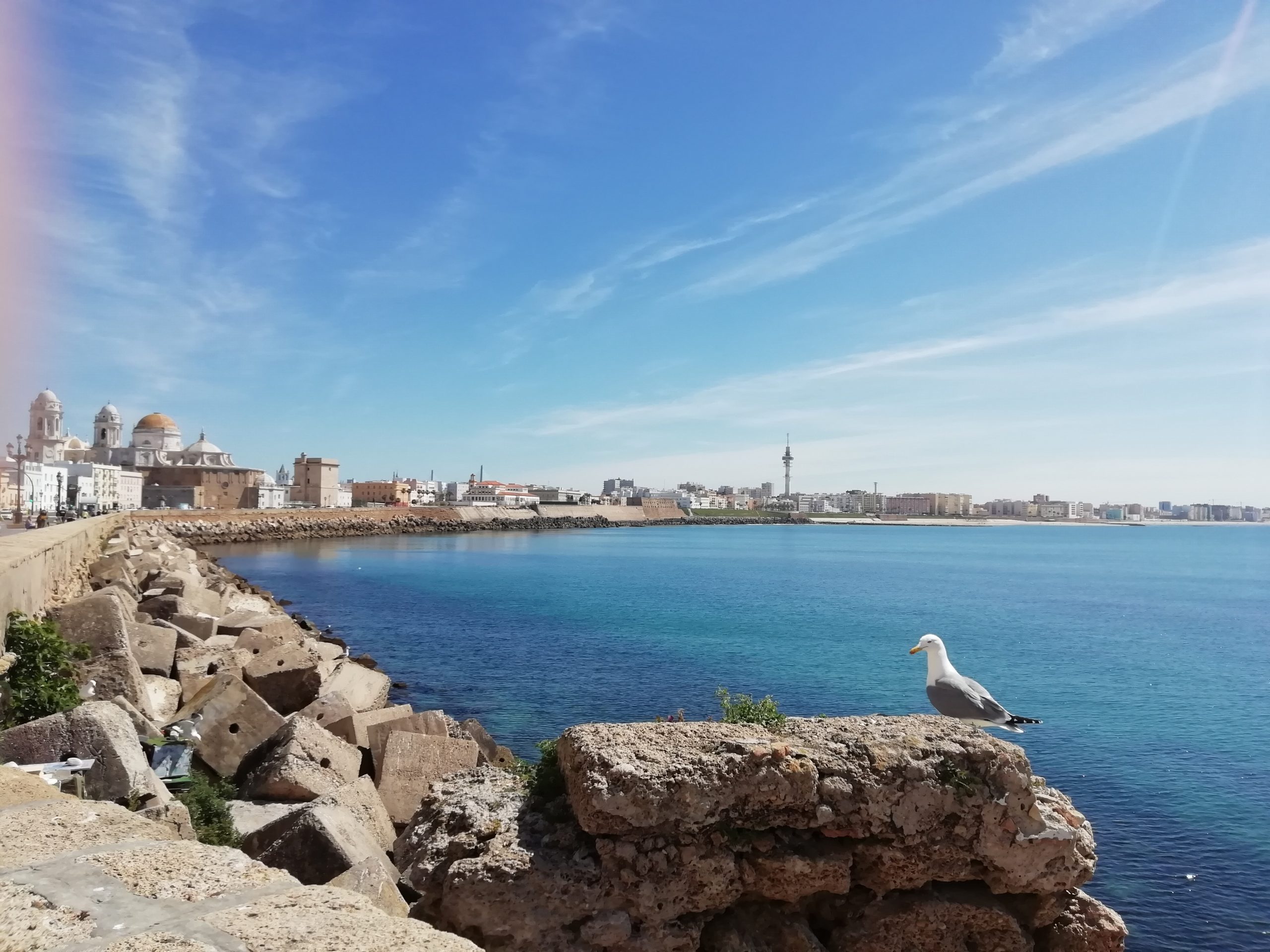
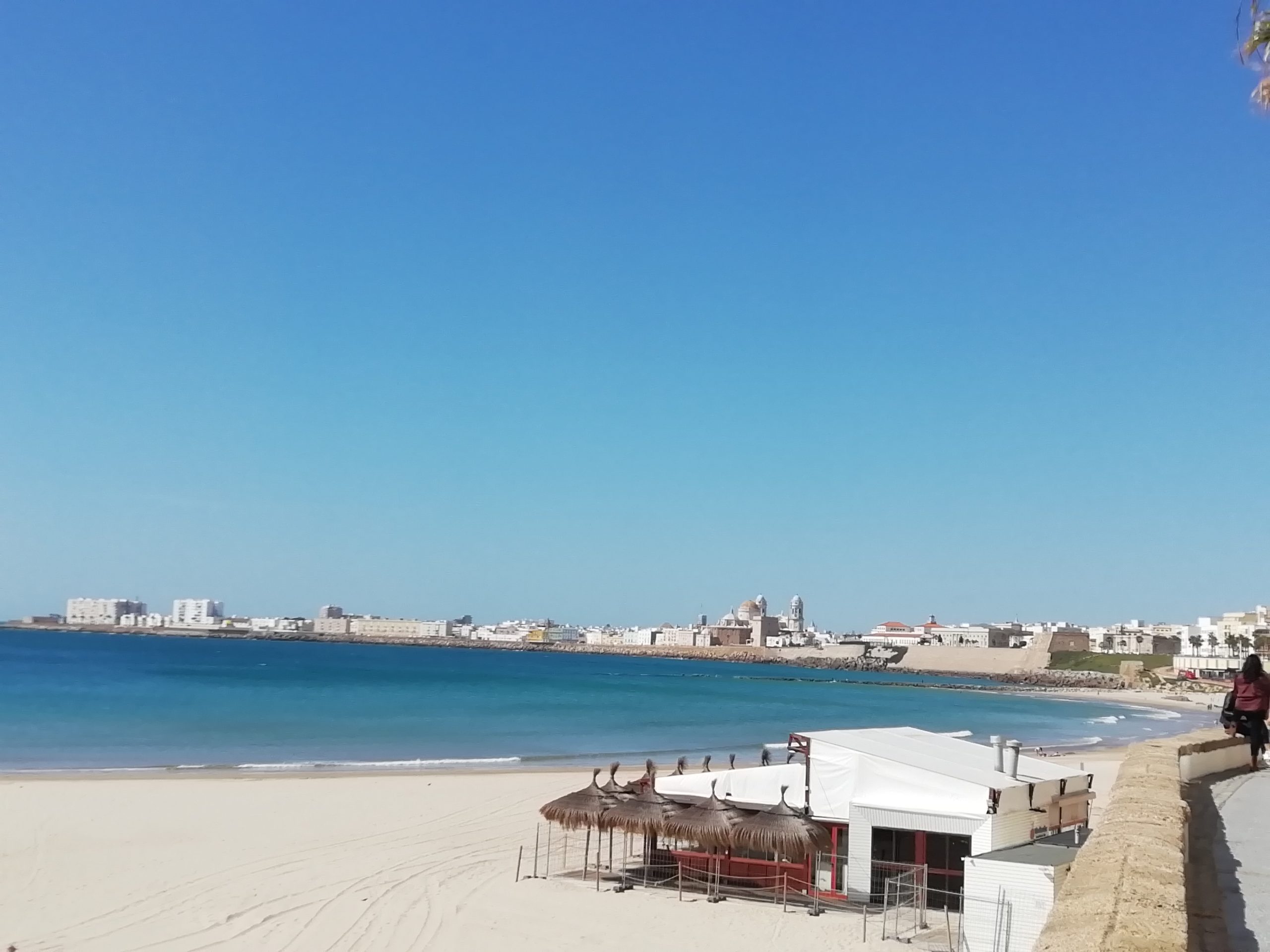
Cádiz, Santa María Beach oposite AtlanticOcean
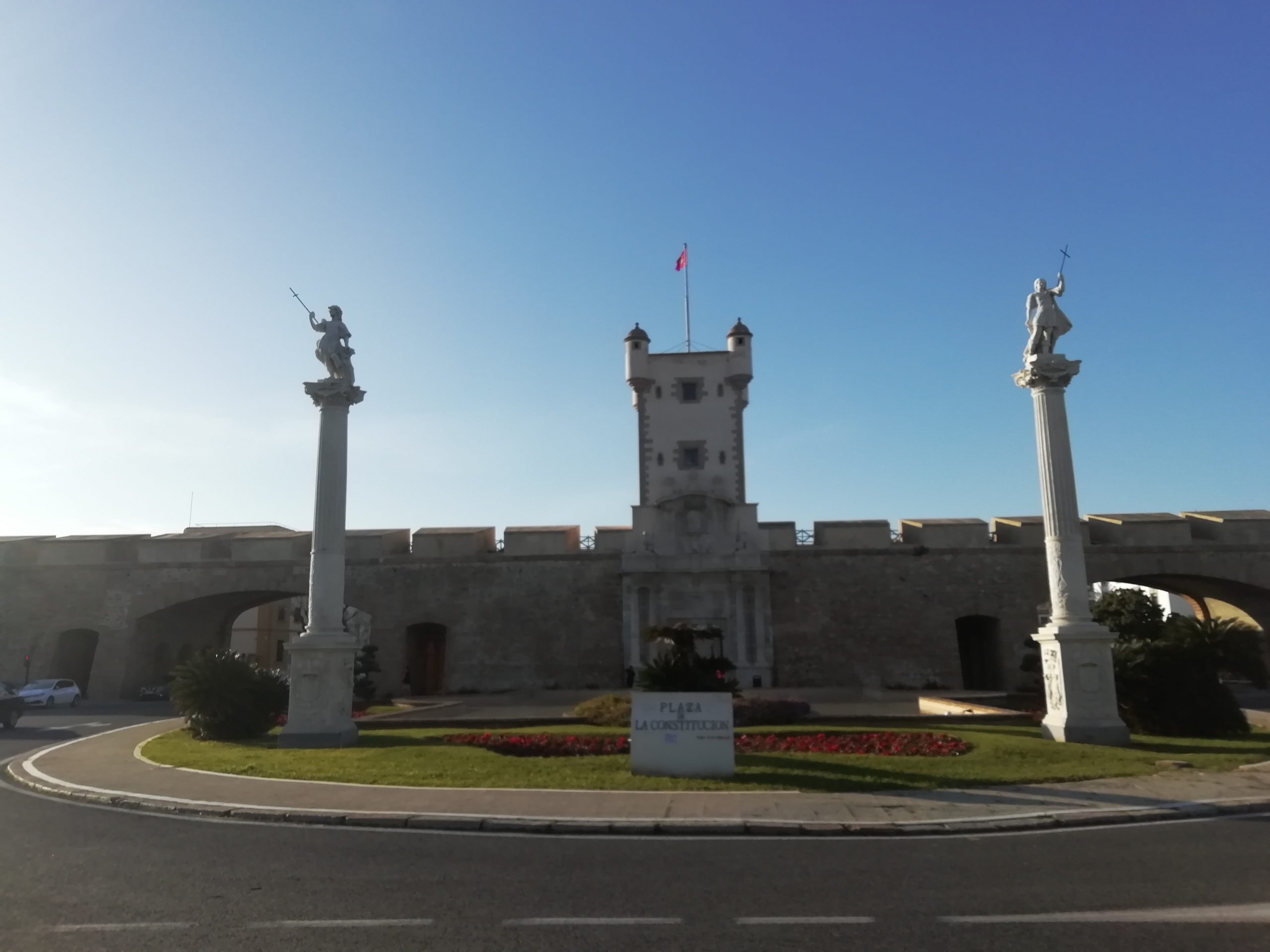
Puertas de Tierra
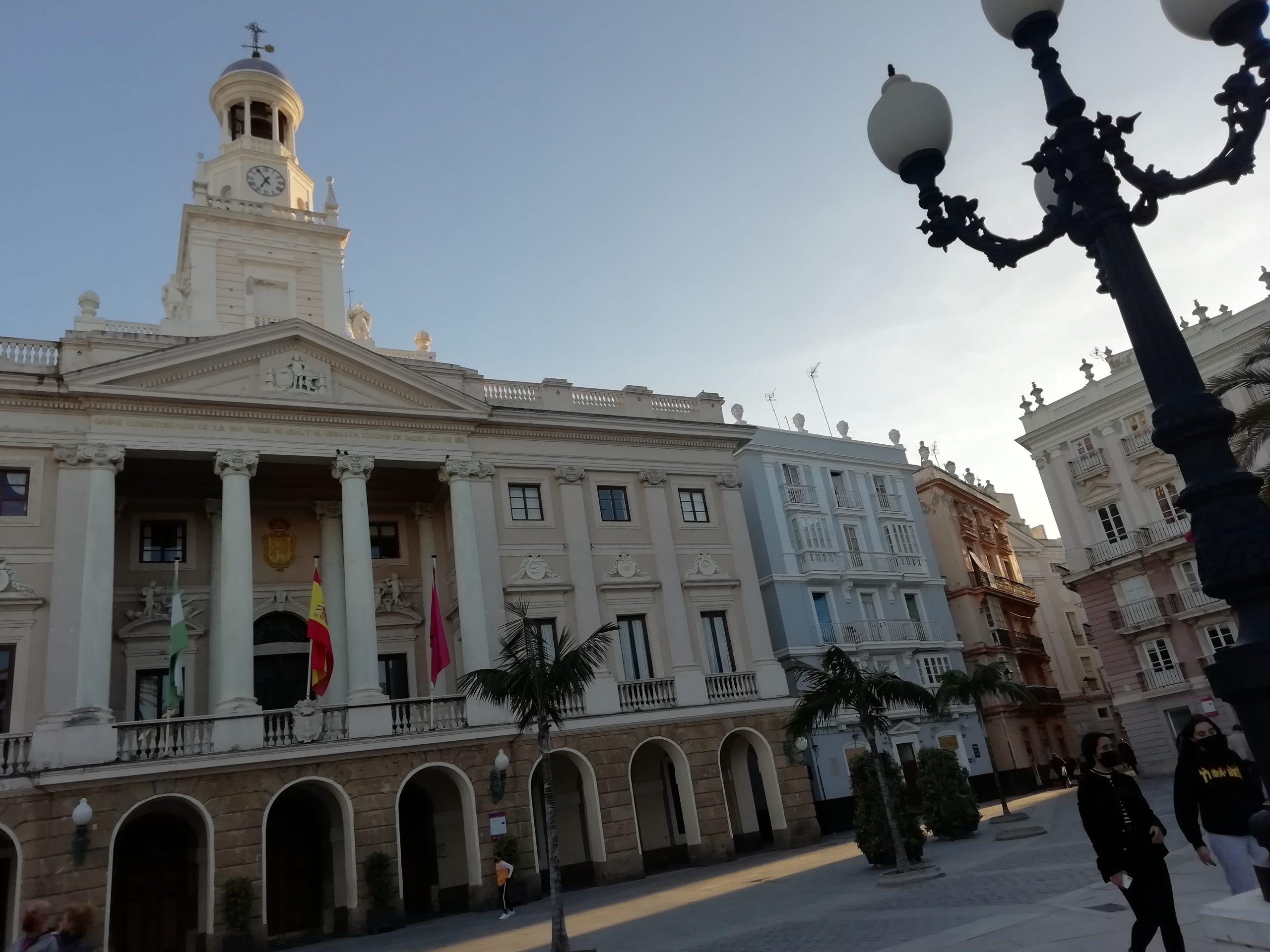
Cádiz Neoclásic’s City Hall
And is that the City of Cadiz is undoubtedly the origin of this “palo”, the most joyful of all flamenco styles, “Alegrías”, as is what you breathe in this ancient city.
We intriduce you a starting for “Alegrías” from our Tablao de Pura Esencia Flamenco, where Natalia Blanco starts briefly explaining what is happening:
Cadiz is more than “Alegrías”, and is considered one of the pillar places of the best Flamenco. While the whole city breathes art and good singing, it is especially the Neighborhood of Santa Maria just behind the famous Puertas de Tierra that gave entrance to the city, where the most flamenco spirit is concentrated.

A walk through its narrow streets of facades characteristic of white and brown of the classic” piedra ostionera“shows us bronze sculptures and busts of artists from the neighborhood and leads us to meet el Centro de arte Flamenco de la Merced
This center was the old Market of Abastos and epicenter of the neighborhood, where now a modern space has been designed where it accommodates both the learning and development of flamenco styles and dances, functioning as an academy, as well as presenting its seasons of shows every year, inviting renowned artists.
We can not forget in Cadiz, its relationship with Carnival and its musical component, closely related to Flamenco, especially in some brief music styles. The lyricists of these facets of singing, are very considerate within the Gaditana popular culture, for their originality and critical success in describing the daily situations and criticism of both city news and around the world, always embellishing the enthronement of the Bay of Cadiz with its “letrillas” (lyrics). The neighborhood of Santa María has also given geniuses in this field, such as Pedro Romero Baro.
Continuing the walk through the Neighborhood of Santa Maria, busts and sculptures of the rest of the artists that are considered heritage of The Cadiz Flamenco throughout history are contemplated; some ancestrals such as Enrique el Mellizo, one of the figures that established the styles of flamenco. Others, figures from more than the twentieth century, such as Maria Cornejo. Conchita Aranda and Chano Lobato himself, who gave splendor and sympathy to the Cadiz chants in their recordings and performances in the Tablaos of the rest of Spain, especially in Madrid.
Especially, if there is a figure within this popular neighborhood that can stand out from the rest, it is Antonia Gilabert Vargas, La Perla de Cádiz. Gypsy and rooted in singing everywhere, guitarist father and mother singer, being granddaughter of Rancapino and cousin of the Camarón de la Isla, there would be no doubt that his musical career would develop for the best Tablaos of the time, such as Los Gallos in Seville or Zambra in Madrid. He left beautiful recordings of magnificent quality.
Behind her bust, backed by the Ocean, lies the Peña de la Perla de Cádiz which gives it its name and is an inexcusable site on the visit to Flamenco art in Cadiz.
Our walk through the Neighborhood of Santa Maria ends here with the usual excuse to return to Cadiz where life breathes with its light, sea breeze, great beaches and better people.
We leave you with a live performance from Pura Esencia Flamenco where Ana Fernandez, our singer, performs some Gaditanas Alegrías; to enjoy!

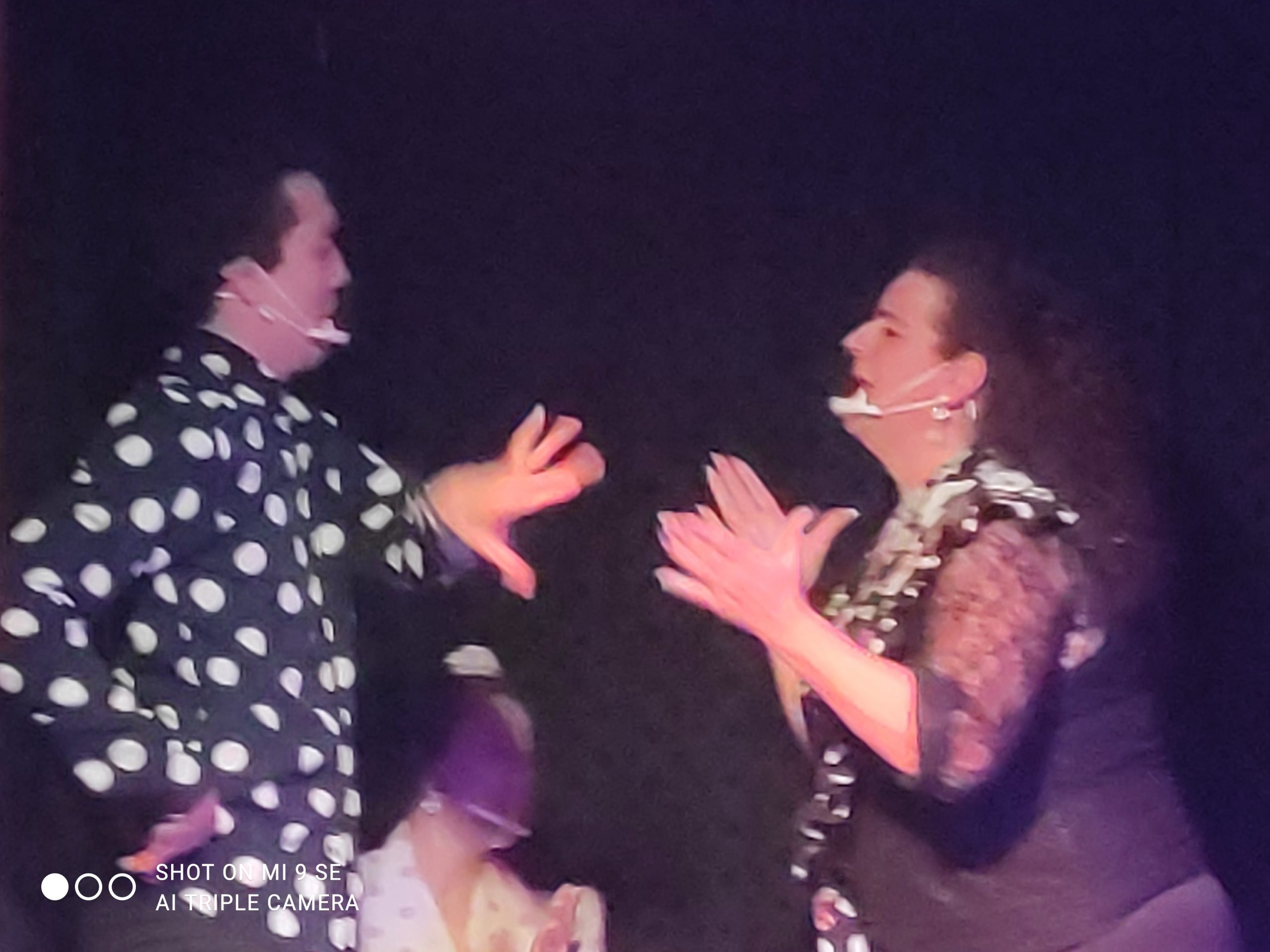
Blog patrocinado por:
Realizado gracias a la aportación de todos los artistas de Pura Esencia Flamenco y redactado por Fernando Toro



